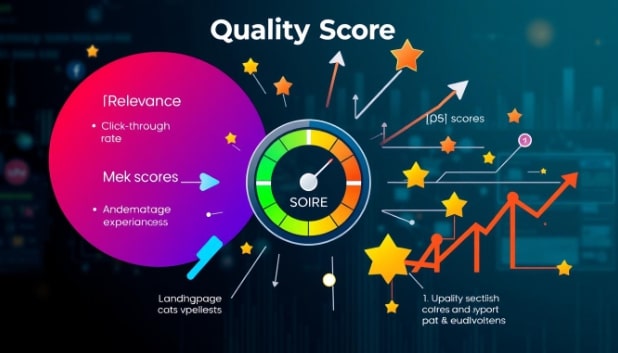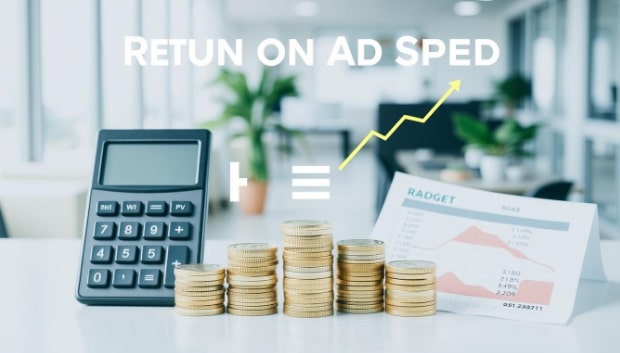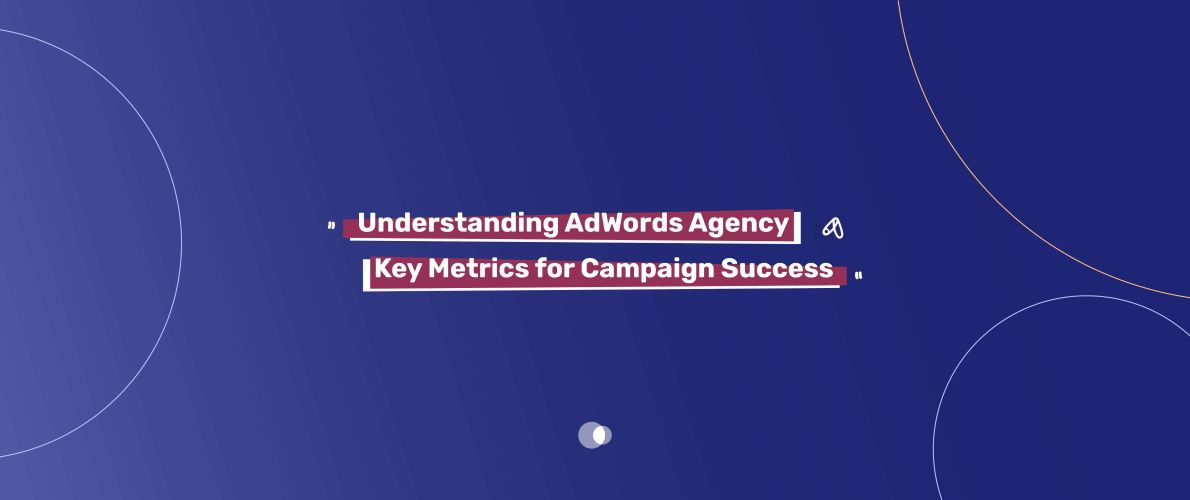In the fast-paced world of digital ads, Google Ads is key for agencies to show real results for their clients. It’s vital to know and use important metrics well. This helps agencies succeed in Google Ads and make their clients happy.Google Ads gives agencies lots of data to work with. This data helps them make smart choices and improve their plans. By knowing what metrics to focus on, agencies can do better than expected. They become important partners in digital marketing.
Table of Contents

Key Takeaways
- Understand the importance of tracking and analyzing key Google Ads metrics for campaign success
- Explore the evolving landscape of digital advertising measurement and the impact of emerging technologies
- Identify the core AdWords agency metrics that are essential for managing and optimizing campaigns
- Gain insights into strategies for improving critical metrics like Click-Through Rate (CTR), Cost per Click (CPC), and Conversion Rate
- Learn how to leverage advanced analytics and custom metrics to drive agency growth and client satisfaction
The Evolution of Google AdWords Campaign Measurement
Digital advertising has changed a lot, and how we measure AdWords campaigns has changed with it. In the beginning, marketers used simple metrics like click-through rate (CTR) and cost-per-click (CPC). Now, with AdWords evolution and AI in PPC, we have new ways to analyze campaigns.
Traditional vs. Modern Metrics Analysis
Today, marketers have more tools than ever before. Machine learning analytics give us deeper insights into how customers behave. This lets agencies fine-tune their campaigns better. Now, metrics like conversion rate, return on ad spend (ROAS), and quality score are key to understanding AdWords’ real impact.
Impact of AI and Machine Learning on Metrics
AI and machine learning have changed how we measure and improve campaigns. With automated bidding and smart ad targeting, marketers can make better choices. These technologies help agencies understand traditional metrics better, leading to better results.
“The evolution of AdWords measurement has been a game-changer for agencies, empowering them to make data-driven decisions that drive real success for their clients.”
Core AdWords Agency Key Metrics Every Manager Should Track
Google AdWords is complex, needing a sharp eye on performance indicators for success. As an AdWords agency manager, focus on key metrics is essential. These AdWords KPIs show how well your campaign is doing.
Impressions are at the top of these metrics. They show how often your ad is seen. Next, clicks count how many people visit your site from your ad. This tells you if your ad is working well.
Conversions are key. They’re the actions you want people to take, like buying or signing up. Tracking them helps you make your ads more effective.
Cost metrics like cost per click (CPC) and cost per acquisition (CPA) are also vital. They help you understand your ad costs. This lets you use your budget wisely.
Knowing these AdWords KPIs well is key to success. It helps you make smart choices and improve your agency’s performance.
Click-Through Rate (CTR) and Its Impact on Campaign Performance
Click-Through Rate (CTR) is key in Google AdWords. It shows how well your ads are doing. It’s the number of clicks on your ad compared to how many times it was seen. This helps you see if your ads are hitting the mark and reaching the right people.
Industry Benchmarks for CTR
Knowing the average CTR is important. The average is about 2% for all Google AdWords ads. But, top ads can get up to 6% or more. This depends on the type of ad and the industry. Checking these numbers helps you see how your ads stack up and where you can get better.
Strategies to Improve Click-Through Rates
- Craft compelling ad copy that resonates with your target audience
- Optimize your ad’s visual elements, such as images and graphics, to catch users’ attention
- Implement CTR optimization techniques, like A/B testing and dynamic ad customization
- Ensure your ad’s landing page provides a seamless and relevant user experience
- Continuously monitor and adjust your ad targeting and bidding strategies
Mobile vs. Desktop CTR Analysis
It’s important to look at mobile CTR and desktop CTR separately. Mobile CTRs are often higher because people on the move are more likely to click. Knowing this helps you make your ads better for both mobile and desktop users. This way, your marketing works well everywhere.
| Metric | Average | Top-Performing |
| Overall CTR | 2% | 4-6% |
| Mobile CTR | 3% | 5-7% |
| Desktop CTR | 1.5% | 3-5% |
“Mastering CTR optimization is the key to unlocking the full potential of your Google AdWords optimization.”
Cost Per Click (CPC) Optimization Strategies
In Google AdWords, optimizing CPC is key for agencies and advertisers. CPC affects a campaign’s success, impacting profit and ROI.
Bid management is a major tactic for CPC optimization. Agencies must watch and adjust bids to stay competitive and profitable. Using data and machine learning, they can improve ad visibility and cut costs.
Keyword optimization is also vital. Agencies should always check and improve their keyword targeting. They need to understand ad auction mechanics and how CPC, Quality Score, and Ad Rank work together.
To lower CPC, agencies use several strategies, such as:
- Using negative keywords to block irrelevant searches
- Improving ad copy and landing pages for better Quality Score
- Adapting to market changes with dynamic bidding
- Testing different ad versions through A/B testing
By using these techniques, agencies can make their AdWords campaigns more efficient and profitable. This leads to better results for their clients.
| Metric | Benchmark | Impact on CPC |
| Click-Through Rate (CTR) | 2-5% (average) | Higher CTR leads to lower CPC |
| Quality Score | 7-10 (ideal) | Higher Quality Score leads to lower CPC |
| Ad Rank | Top 3-4 positions | Higher Ad Rank leads to lower CPC |
Quality Score: The Hidden Driver of Campaign Success
In Google AdWords, Quality Score is key to success. It affects ad performance, position, and cost. Knowing how to boost Quality Score can give advertisers a big advantage.
Components of Quality Score
Quality Score includes ad relevance, landing page experience, and expected click-through rate (CTR). These parts are vital for Quality Score. They affect your ad’s visibility and cost.
Impact on Ad Position and Costs
A high Quality Score means better ad spots and lower cost-per-click (CPC). This helps advertisers save money and get more from their investment. It also helps them beat their rivals.
Quality Score Improvement Techniques
- Write ad copy that matches what users are searching for and improves landing page experience.
- Make landing pages easy to use, ensuring ad relevance and expected CTR.
- Keep working on Quality Score factors to stay ahead.
- Use data and advanced analytics to find ways to get better.
By getting good at improving Quality Score, agencies can make their AdWords campaigns work better. This leads to better results for clients and makes agencies leaders in their field.

Conversion Rate Optimization for AdWords Campaigns
In the digital marketing world, Conversion Rate Optimization (CRO) is a big deal for AdWords campaigns. It focuses on getting more website visitors to take actions like buying or filling out forms. This can greatly increase the return on investment (ROI) of your AdWords ads.
Landing page optimization is a key CRO strategy for AdWords. Your landing pages should look good, be easy to use, and smoothly connect with your ad. You might test different designs, headline options, and call-to-action buttons to find the best mix.
Conversion tracking is also vital for CRO. It lets you see which marketing actions lead to the most conversions. This way, you can make smart choices to improve your campaigns. Google Analytics can give you important details about your conversion path and show you where to get better.
For successful CRO in AdWords, you need a complete view of the customer journey. From seeing your ad to making a purchase, every step matters. Keep testing, analyzing, and tweaking your plans. This way, you can get the most out of your AdWords spending and grow your business steadily.
“The key to CRO is to always be testing, learning, and iterating. There’s no one-size-fits-all solution, but by constantly optimizing your landing pages and conversion tracking, you can unlock the true potential of your AdWords campaigns.”
Return on Ad Spend (ROAS) and Budget Management
Understanding Return on Ad Spend (ROAS) is key for managing AdWords campaigns well. ROAS shows how well ad money is making sales. This helps agencies manage budgets better and boost their clients’ marketing results.
Setting ROAS Goals
Setting realistic ROAS goals is the first step in managing budgets. Agencies should look at past data, industry standards, and client goals to set targets. These targets should be checked and updated as campaigns change, keeping ad spend efficiency a main focus.
Budget Allocation Strategies
With ROAS goals set, agencies can plan how to spend budgets to increase profits. They might move money from campaigns that don’t do well to those that do. Or, they might invest in testing and improving ads to get better results. This way, agencies can make sure their clients get the most from their ads.
Using ROAS with other important metrics like CTR and quality score gives a full picture of success. This approach helps agencies make smart choices, improve ad spending, and achieve great results for their clients.
“Optimizing ROAS is not just about maximizing revenue; it’s about ensuring that every advertising dollar is working as hard as it can to drive profitability and growth for our clients.” – Jane Doe, Senior AdWords Strategist

By getting good at ROAS and budget management, AdWords agencies can help their clients’ campaigns succeed more. This leads to more sales and profits.
Advanced Analytics and Custom Metrics for Agency Growth
As the digital marketing world changes, agencies must keep up. They can do this by using advanced analytics and custom reports. Data visualization tools help them understand how well their clients’ campaigns are doing. This lets them make smart choices and get better results.
Agencies can also make custom reporting systems. These track important KPIs that match their clients’ goals. This detailed view can find new chances and show the agency’s worth through clear results.
Adding predictive analytics to their work can give agencies an edge. They can look at past data and spot trends. This helps them guess what clients need, improve campaigns early, and offer better advice.
These advanced tools and metrics are key for keeping clients and growing the agency. By sharing insights that really help businesses, agencies can build stronger ties with their clients. They become trusted partners in the fast-changing digital world.
| Analytics Technique | Key Benefits |
| Data Visualization | Improved campaign performance monitoring and decision-making |
| Custom Reporting | Tailored insights to meet client-specific objectives |
| Predictive Analytics | Proactive campaign optimization and strategic guidance |
“By leveraging advanced analytics and custom metrics, agencies can unlock new levels of growth and solidify their position as indispensable partners for their clients.”
Conclusion
Understanding and using AdWords agency key metrics is key for success in digital ads. This guide has shown the important parts of AdWords performance analysis. It covers everything from tracking changes to the core metrics managers need to watch.
Agencies can improve by focusing on key metrics like click-through rate and cost per click. They can also work on quality score and conversion rate. This helps them optimize campaigns and get the most out of their ads.
Using advanced analytics and custom metrics gives agencies deeper insights. This helps them make better decisions and grow. The secret to success in International Adwords agency is learning and adapting fast to industry changes.
Agencies should keep up with trends, use AI and machine learning, and focus on the most important metrics. This way, they can succeed in the long run and give great results to their clients.
FAQ
1)What are the essential metrics that AdWords agency managers should track?
AdWords agency managers should keep an eye on several key metrics. These include impressions, clicks, conversions, and cost-per-click (CPC). They also need to track click-through rate (CTR), quality score, and return on ad spend (ROAS). These metrics help understand how campaigns are doing and guide improvements.
2)How can AdWords agencies improve their campaign’s click-through rate (CTR)?
To boost CTR, AdWords agencies can try a few things. They can write more engaging ad copy and make ads more relevant. Testing different ad formats and looking at industry benchmarks can also help. It’s also important to consider mobile and desktop CTRs to improve performance on all devices.
3)What is the importance of quality score in AdWords campaigns?
Quality score is key to AdWords campaign success. It shows how relevant and high-quality an ad and landing page are. A better quality score means ads can show up higher and cost less per click. This makes campaigns more efficient and profitable.
4)How can AdWords agencies optimize their cost-per-click (CPC)?
To lower CPC, AdWords agencies can use several strategies. They can manage bids better, understand the ad auction, and pick the right keywords. By focusing on these, agencies can cut costs while keeping ads visible and relevant.
5)What role does return on ad spend (ROAS) play in AdWords campaign management?
ROAS is vital for measuring AdWords campaign profitability. Agencies should set achievable ROAS goals and manage budgets well. They should also optimize ad spend to ensure campaigns are as profitable as possible.
6)How can AdWords agencies leverage advanced analytics and custom metrics for growth?
Agencies can use advanced analytics like data visualization and custom reporting to understand campaigns better. By creating custom metrics for clients, they can improve campaign success. This helps build strong client relationships over time.



